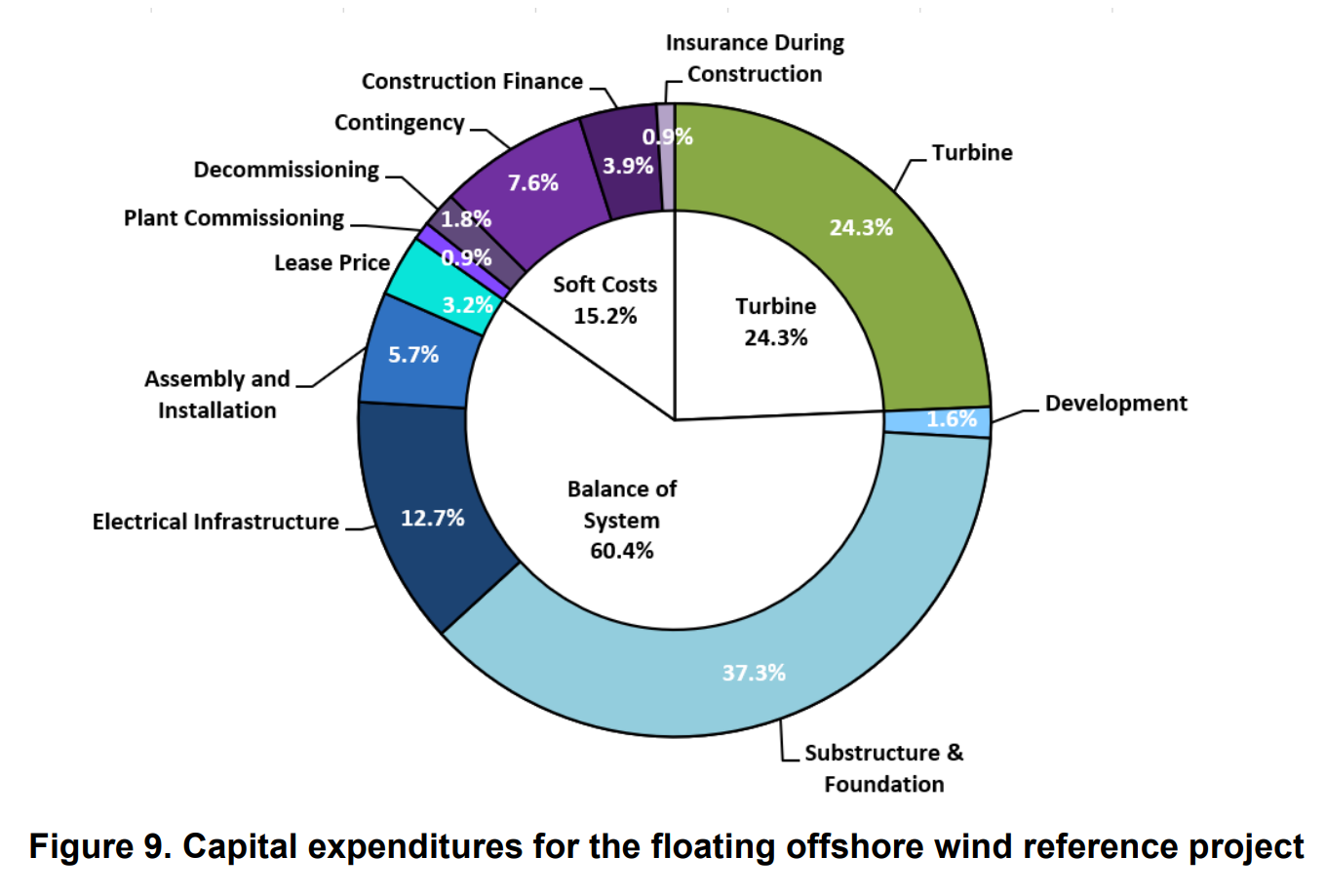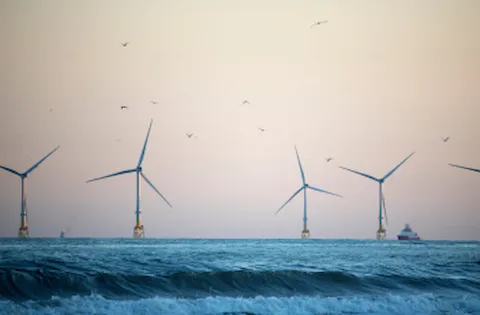Offshore wind: Solving the transportation and installation conundrum
As the offshore wind sector seeks to overcome a series of challenges, including risks related to transportation and installation (T&I), DNV’s digital solutions and software can help manage these risks.
Solving the transportation and installation conundrum
Offshore wind is seen as an essential element in the efforts to decarbonise energy production around the globe with offshore wind installations said to be on track to grow 10-fold by 2035, reaching 519 gigawatts (GW). That offshore wind is a viable source of clean power for the energy transition is generally accepted and there have been several interesting developments in recent years.
Turbine size and output are growing rapidly because of the high focus on the energy transition to offshore wind and the need for a lower Levelised Cost of Energy (LCOE). Technology advances allow the future offshore wind energy capacity to be supplied by floating turbines when moving to deeper waters. Regarding these, construction, installation and maintenance are focus areas for new innovations to cut costs.
On the other hand, according to the IEA in its Renewable Energy Market Update published in June 2023, offshore wind growth is not expected to match the record expansion it achieved two years ago due to the low volume of projects under construction outside of China.
Identifying challenges and bottlenecks
This year has seen some setbacks in the offshore wind sector due mainly to the deteriorating global economic landscape. In the US, costs associated with offshore wind projects have risen by 57% since 2021 due to inflation in components and labour costs as well as rising interest rates for financing. In Europe, where there is a target of another 150GW by 2050, one third of that should roll out this year and next, but again rising costs are leading to delays and cancellations in some projects.
Clearly, controlling costs is a major challenge to overcome and, because the cost of raw materials and finance is outside the operators’ control, then more attention needs to be paid to other aspects of windfarm construction and operation. In its report 'Floating Wind: Turning Ambition into Action', DNV ascertained what stakeholders in floating offshore wind identified as the main risks to progress.
Topping the list of identified risks were two areas that relate to transportation and installation (T&I). Second on the list – installation vessel availability – is quite obviously a transportation and installation issue.
The number of floating wind structures will be far more than the number of drilling rigs and platforms ever used in oil and gas and demands a new fleet of vessels to be constructed or converted to better suit offshore wind requirements. These are complex vessels and do take time to construct. In other words, the success of energy transition to offshore wind depends on the availability of purpose-built installation vessels.
The first of the identified risks (ports and infrastructure) may also relate to T&I since the Owners and Engineering, Procurement and Construction (EPC) contractors need to reserve port facilities and equipment in advance for their projects, requiring more detailed and accurate planning. There are differences as well in the T&I elements between fixed and floating wind turbines. Because fixed wind is mostly constructed in situ, the installation expenses as a percentage of overall costs are higher than for floating wind, where most of the assembly is done ashore.

Source: NREL 2020 Cost of Wind Energy
For fixed offshore wind turbines (OWT) the assembly and installation share is 10.4% because less assembly can be done onshore.
A software solution to a hardware problem
It may not be easy to identify cost saving opportunities when looking purely at finances rather than how logistics and technology can play into improving all aspects from planning to production and beyond. To address this, DNV has developed software solutions that keeps pace with the increasing complexity of T&I.
Managing T&I risks are an important part of the project life cycle of fixed and floating OWT. However, experience shows several projects have not considered it sufficiently. This could lead to complex operations or the costly redesign of structural components because the effect of T&I was not properly taken into account early in the design process. Many are also doing T&I without the integration of the hull and objects to be transported. This could lead to under-, or overestimation of the structural responses used for the design.
Fan Joe Zhang, Product Manager for Floating Structures at DNV Digital Solutions, described the feedback from customers: "T&I are in general a complex process for the floating offshore wind turbine (FOWT) project. Insufficient consideration and analysis during the planning and design phases may lead to unexpected changes to the structure and serious delays in the construction and installation, which increase the CAPEX of the whole project."
DNV’s software for offshore structures, Sesam, has been in use for decades by the oil and gas sector and other industries to perform T&I design and analysis. It can calculate the structural responses to do ultimate limit state (ULS) and fatigue limit state (FLS) analyses based on response spectra, accelerations or when there is an integrated hydrodynamic and structural analysis.
Modular approach offers benefits
By use of non-linear coupled analysis, Sesam can visually simulate, test and evaluate marine operations ahead of offshore handling. This leads to a reduced risk for transportation, installation and lifting of fixed and floating structures and their wind turbines, and installation of subsea equipment.
For a typical floating turbine installation process, Sesam could help the users on the analysis of loadout, transport, float-off, fit out quay operation, wet towing, mooring/cable hookup, and other operations. For a typical fixed installation process, the software could also do well in the analysis of loadout, transportation, installation and related actions. Transportation on a barge or heavy-lift vessel can be analysed by Sesam for floating structures.
One of the benefits of Sesam is its modular approach and the concept of using a common model from the initial design phase through all design revisions to the final design of the structure. This will significantly reduce the modelling/analysis time. Another benefit is that having a common interface between different modules means it will be much easier for end users as opposed to using various tools from other system suppliers.
This will lead to higher accuracy and fidelity and contribute to giving Owners/EPCs a better overview of the whole project process and cost evaluation. Furthermore, efficient analysis and user-friendly 3D tools may offer easier understanding of the operation process, quick evaluation of different plans and even real-time (onsite) modifications/reactions.
DNV held a webinar on the topic of T&I and the use of Sesam software in June this year where several questions from the audience on the application of various Sesam modules for different situations were addressed. Click on the below link to learn more about how Sesam software solutions will meet the needs of T&I.
Authors: Fan Joe Zhang and Ole Jan Nekstad
12/20/2023 1:13:33 PM



